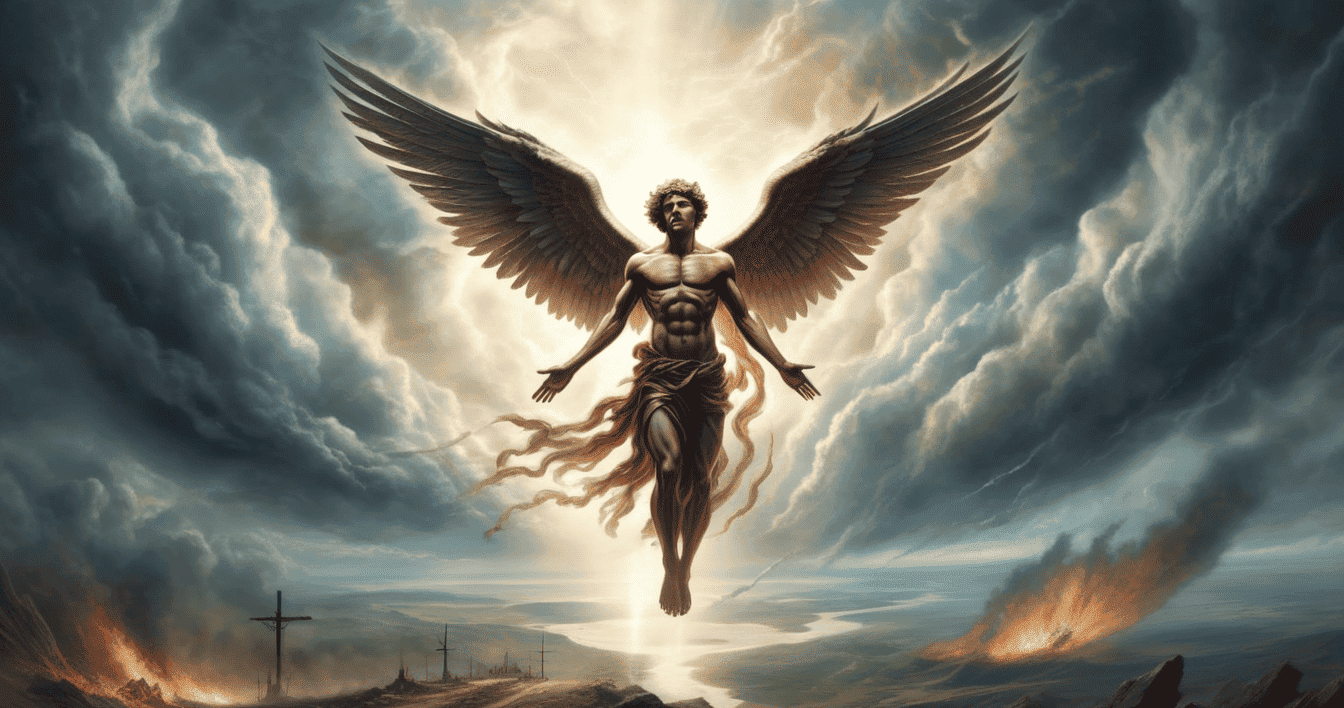Exploring the Biblical Depiction of Angels and Demons

The Bible presents a complex and often mysterious view of angels and demons, beings that play significant roles in the spiritual realm. While angels are typically portrayed as messengers and servants of God, demons are depicted as malevolent spirits opposing His will. This article explores the origins, functions, and biblical descriptions of these entities.
Understanding Demonology
Demonology, the study of demons, has its roots in both ancient Greek and Christian theology. The term "daimon" in Greek originally referred to a lesser deity or spirit, but in Christian contexts, demons are unequivocally evil. The New Testament and Jewish tradition heavily influenced Christian demonology, emphasizing the deceitful nature of these spirits. The discernment of spirits was crucial to distinguish between divine and demonic influences.
Four Theories on the Origin of Demons
Fallen Angels: The most widely accepted theory within conservative theology is that demons are fallen angels. Matthew 25:41 refers to the "eternal fire prepared for the devil and his angels," suggesting that demons are angels who followed Satan in his rebellion against God.
Spirits of the Dead: A less supported theory suggests that demons are the spirits of the wicked deceased. However, this contradicts biblical teachings about the afterlife, where the dead remain in Hades until judgment (Luke 16:23, Revelation 20:11).
Pre-Adamic Spirits: The "gap theory" posits that demons could be the spirits of a pre-Adamic civilization, aligning with the idea that the Earth is millions of years old. This theory lacks substantial biblical backing.
Children of Angels: Some interpret Genesis 6:4 to mean that demons are offspring of angels and humans, though this interpretation is speculative and not widely accepted.
Notable Demons in the Bible
The Bible mentions several demons by name or description:
- Satan: Known as the adversary or accuser, he is the most prominent figure of evil in both Testaments.
- Beelzebub: Called the prince of demons, linked to an ancient Philistine god.
- Lucifer: Originally a term for "light-bringer," now synonymous with Satan due to his fall from heaven.
- Abaddon/Apollyon: The king of the bottomless pit, symbolizing destruction.
- Legion: A collective name for many demons possessing a man, as described in the New Testament.
Visual Depictions of Satan
Throughout history, Satan's appearance has varied:
- The Serpent: Linked to the temptation in Genesis.
- The Fallen Angel: Often depicted with ethereal features, like in early medieval art.
- The Beast: With animalistic features in late medieval art.
- The Winged Devil: Inspired by Dante's "Inferno."
- Satan with Horns: Reflecting folklore and artistic interpretations.
- The Devil as an Adonis: Milton's portrayal in "Paradise Lost."
- Red Devil: A modern, theatrical depiction.
Biblical Angels
Angels in the Bible often appear in ways far removed from popular culture:
- Cherubim: Guardians of holy places, depicted with multiple wings and faces in Ezekiel's vision.
- Seraphim: Known for their six wings and the role of praising God, as seen in Isaiah's vision.
- Archangels: Messengers with significant roles, like Michael and Gabriel.
- Guardian Angels: While not explicitly named, scriptures suggest angels watch over individuals.
Conclusion
The biblical portrayal of angels and demons challenges many of our preconceived notions shaped by art and media. By delving into the Scriptures, we gain a clearer understanding of these spiritual beings, their roles, and their appearances, which are often far more complex and symbolic than commonly depicted.